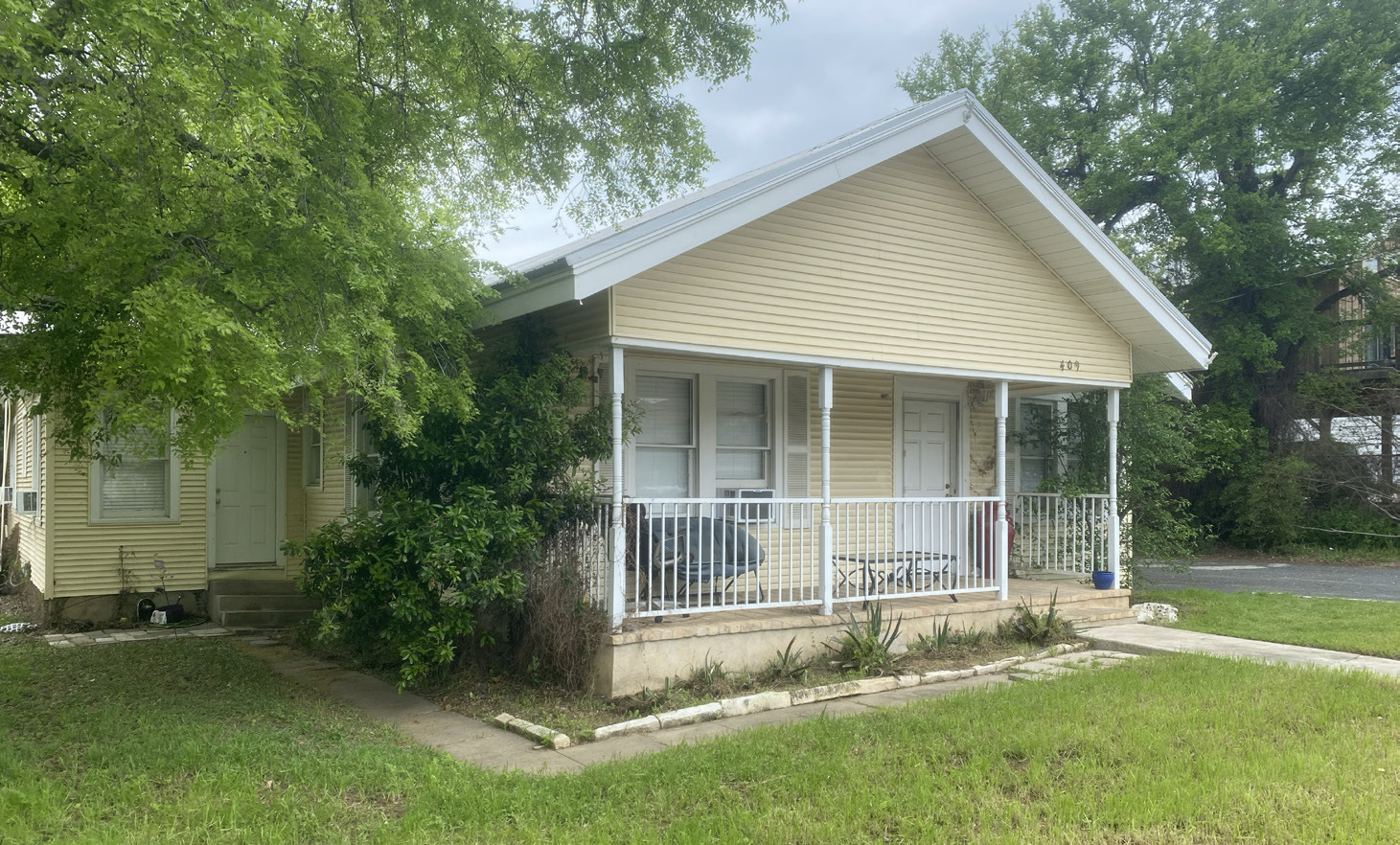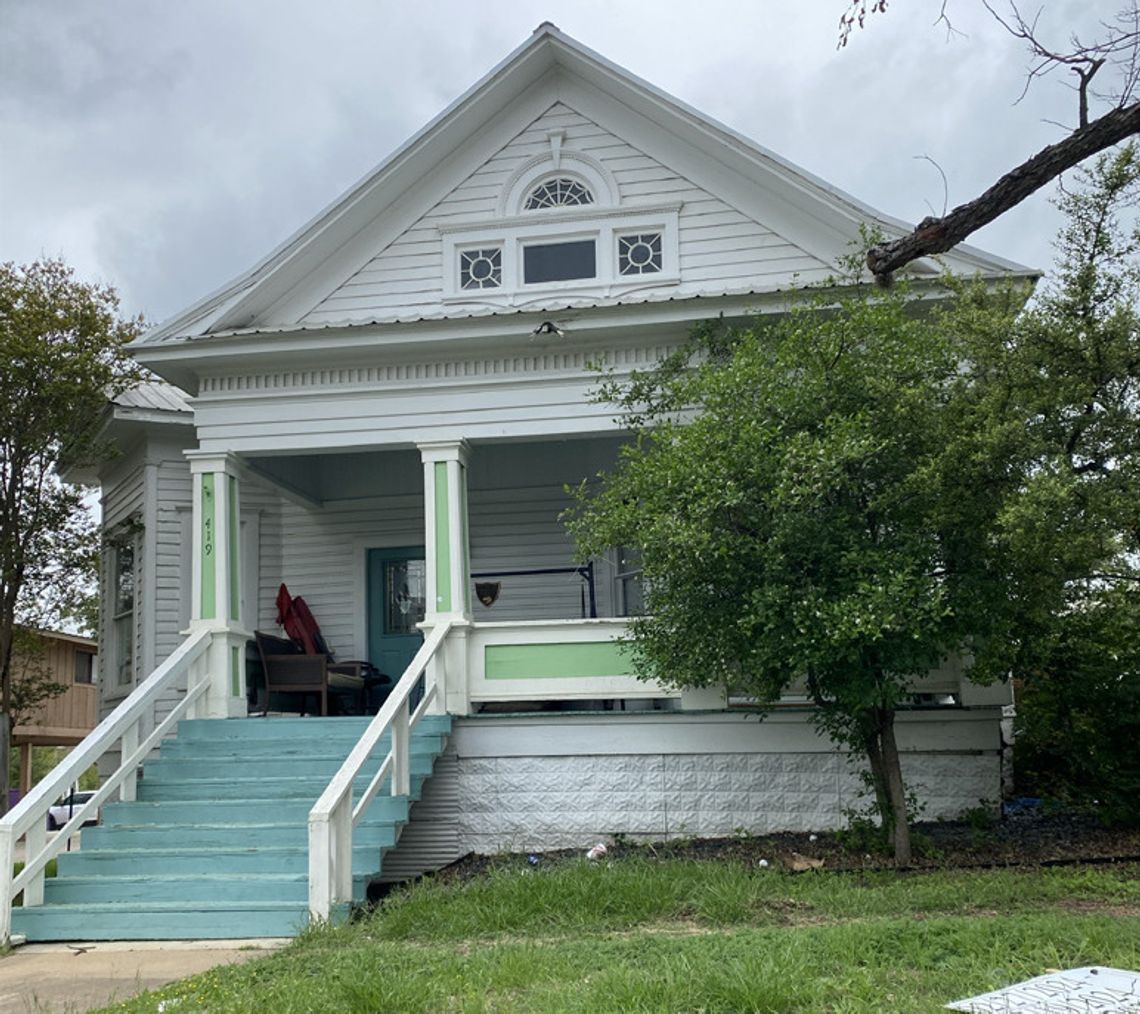HOUSING DEVELOPMENT
San Marcos’ downtown is constantly growing and changing. With the Texas State University student population growing, so does the need for housing to accommodate that population. But with additional impervious cover comes concern over increased problems with flooding. And with additional large developments downtown comes another fear of issues related to population density and loss of the “small town feel” of San Marcos. The public comments on a San Marcos City Council agenda item related to the possibility of development aimed at student housing that would replace four residential structures downtown, reflected these opposing views at the regularly scheduled meeting Tuesday.
The San Marcos City Council heard a staff presentation and held a public hearing on a request by Shannon Mattingly, with the Drenner Group, on behalf of property owners Peggy Taylor and Daryl Burttshell, for a Preferred Scenario Amendment on both the current and future comprehensive plan from Existing Neighborhood to High Intensity - Downtown for approximately 1.139 acres of land generally located southwest of the intersection between Lindsey Street and North Street. According to the agenda packet, the applicant is requesting a preferred scenario change to High Intensity - Downtown in order to develop a larger student housing complex. The Preferred Scenario of Existing Neighborhood is established, primarily residential areas intended to maintain their existing character and to follow development and redevelopment patterns that are compatible with the existing character. High Intensity - Downtown, the requested scenario change, includes compactness, great streets, pedestrian accessibility, bike accessibility, public spaces for social interaction and includes all zoning except for conventional residential.
Peggy Taylor, the current property owner, said that she and her husband purchased those properties in 2001 and 2003 as existing rental properties. She said that they had planned to sell the properties to be developed as apartment buildings when they retired, as many other property owners in the area had done.
“Unfortunately, last April I lost Brett unexpectedly and suddenly to a massive heart attack in his sleep. Brett did all of the maintenance that was required to keep these properties in their rental condition for our students,” Taylor said. “We were in discussion with Kenyon Properties before Brett’s passing, and I agreed to the contract with Mr. Kenyon after his passing. And I understood his purchase would be contingent on the development plans being approved. We’ve been waiting a year for the sale to finalize only to watch it fall apart due to the zoning not being approved for my existing piece of property.”
Andrew Salem, a Texas State University student, spoke in favor of the development saying that San Marcos is in desperate need of affordable student housing. He said he was able to collect approximately 1,200 signatures in favor of this development last semester.
Brian Olson, a San Marcos resident, said the potential property taxes the development would generate would help the city offset recent losses.
“Yes, it’s unfortunate that we lost $1.5 million [of property taxes] to our community, because Texas State purchased two apartments [Vistas and Sanctuary Lofts]. That’s a huge loss of property tax revenue. One of Texas State’s main reasons to purchase that property was to get rental prices down for their new students. This problem is not a Texas State issue. It’s been an issue for a decade that started with community leaders fighting against new developments where people can live in our community,” Olson said, adding that high rental prices are due to the supply of housing being lower than the demand for it. “The proposal that went in front of P&Z could recover 80% of lost revenue for our community.”
San Marcos City Council Member Matthew Mendoza said he has been in discussion with community members that live in Sunset Acres, Rio Vista, Wallace Addition and Victory Gardens.
“They kept asking me, ‘Why aren’t the students close to the university? Why do we spread them out throughout the entire town? Why are they affecting our neighborhoods?’” Mendoza said. “The character of that neighborhood [on Lindsey Street and North Street] seems to be university. … I understand the need for affordable housing [and] for housing period for the students we have. They are part of our population. They deserve to be listened to.”
Amanda Hernandez, San Marcos planning and development services director, said the Planning and Zoning Commission recommended denial of this request for several reasons, including the pending comprehensive plan update, contradictions with other policies in the comprehensive plan, historic properties on site, ability to develop under existing multifamily zoning and extending the boundary of downtown and encroachment into existing neighborhoods. Due to the denial by the by the Planning and Zoning Commission, a supermajority vote will be required by the council to pass this item, which San Marcos City Attorney Samuel Aguirre said is six votes. City Council Member Jude Prather recused himself from the vote due to his “wife’s employment at the university, which has property across the street from this.”
Lisa Marie Coppoletta, a San Marcos resident, said that the Planning and Zoning Commission voted unanimously against the development and discussed impervious cover, “which means they know it is a flood concern.”
San Marcos Mayor Jane Hughson said flooding seems to be a topic of conversation around this development and asked Hernandez to explain that.
Hernandez said there was a discussion about another property in which the downstairs parking garage flooded and that there was concern over the flooding of downhill neighbors.
“A lot of stuff has been built on campus that could potentially lead to additional run-off. That’s what we’re really talking about is run-off coming off of the university property because we’re adjacent to the university,” Reyes said. “With this project they’ll have to go through all of our environmental regulations, which would include a Watershed Protection Plan.”
Hernandez said the possible future development will include two other lots, which are already labeled on the preferred scenario map as Downtown - High Intensity: one directly across the street from the properties under discussion on North Street and Lindsey Street and one on Lindsey Street and North Comanche Street. She said at the next city council meeting, the council will consider approval of student housing as a use as well as additional height allowances for all three of these properties. Hernandez said at the next meeting the council will also consider a zoning change to Character District 5 Downtown for the other two lots that are to be part of this development but not for the area with the four houses being discussed at Tuesday’s meeting. Character District 5 allows for mixed uses, including residential uses and encourages walkability.
Matthew Kenyon, the developer on the project, said he is trying to address many of the planning and zoning commissioner’s concerns by asking the council to place restrictions on what can be developed. For example, he said CD-5 allows for five stories, but he would be amenable to a restriction of only four stories.
“We would put only multi-family on the west side. This would mean no rentby- the-bedroom units unless someone specifically asked for it,” Kenyon said. “The maximum impervious cover we would agree to restrict to 80%. CD-5 zoning allows for 100% impervious cover.”
Jared Chumsae, a volunteer with the Tenant Advocacy Group and a San Marcos resident, spoke in public comment in opposition of the item.
“This PSA would extend downtown west of North Street,” Chumsae said, adding that he fears this would lead to the boundary being extended even further in the future. “The Lindsey Street proposal would undermine the plans laid out by Vision SMTX [Comprehensive Plan]. It would displace existing residents, demolish housing stock and reduce affordable housing options for residents in the area.”
Hernandez said that this property, while not located in a historic district, does have historic properties nearby. She said that using the Historic Resources survey, the property at 419 North Street is classified as High Priority. The survey defines High Priority as 'resources recommended as potentially eligible for individual [National Register of Historic Places] or local landmark designation or as a contributing resource to a potential NRHP or local historic district.' It is an example of a 1900 Queen Anne style residence with original wooden features.
The properties at 409 North Street and 413 Lindsey Street are classified as Medium Priority on the Historic Resources Survey. Medium Priority is defined in the survey as 'resources that have integrity but are not distinguished examples of a particular style or property type; likely not individually NRHP or local landmark eligible but potentially contributing to a historic district; may include resources whose eligibility status is undetermined pending further research and documentation.' Both residence are examples of 1925 bungalows.
“Due to these designations, if the current developer or any current or future owner wished to demolish the structures, they would be subject to our Demolition Delay Ordinance,” Hernandez said. “The request to demolish would be presented to the Historic Preservation Commission, and there could be a potential six-month delay on any demolition of these historic properties. The purpose of the Demolition Delay Ordinance is to allow any of the interested parties and the property owner the ability to consider alternatives to demolition. I want to note that we’ve been in contact with the applicant, who has indicated a willingness to relocate versus demolish the structures.”
Taylor, the property owner, pointed to the other, similar developments in that neighborhood.
“The block is surrounded by apartment and commercial businesses. There’s not a single family residence on my block that I’m aware of. The development being proposed would not be inconsistent with what is already there, and I know there’s been an issue with the houses being touted as historical,” Taylor said, adding that she and her husband had made many modifications to the homes and actually had the property at 415 North Street moved to that location from another location. “Since we’ve owned these houses … there’s never been a single indication from anyone that they were in any way historical.”
San Marcos City Council Member Mark Gleason said that part of town is a university area.
“I would love to save every structure in town, and I will fight for the neighborhoods adamantly. And I will fight against some of these things that are inappropriate or do not make a lot of sense for development. I’m leaning toward this is going to be a good project where it’s at,” Gleason said. “My only hope is that if this does happen, you don’t immediately turn around and sell it to the university. And I want the students to have a safe environment. I don’t want them to have to bring a car. I want them to come to a place and go, ‘Hey there’s an apartment [and] the university’s across the street. I don’t even need a car.’ That’s the mindset that we need to help with our downtown parking and helping out with all of the congestion.”
The first vote on this item will be on April 2 and the final vote is set to occur on April 16.

409 North Street is one of the houses deemed 'Medium Priority' on the Historic Resources Survey. Daily Record photo by Shannon West







